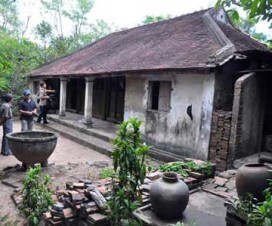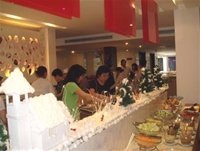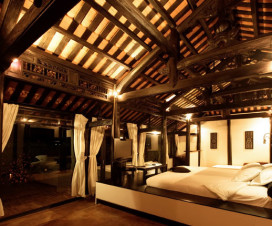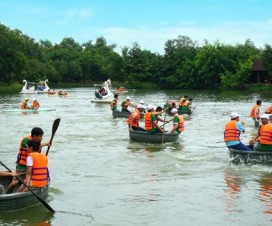Vietnam Travel – it is one of the best choice for many tourists 2010. To have plan for your great Vietnam tours, what is the most things you should know? Of course, we should not forget checking the weather at Vietnam destinations before. Here below are some useful information of the best weather at destinations in Vietnam.
Vietnam is a country located in Southeast Asia and therefore it benefit generally on a dry and warm weather, yet there are several seasons with specific characteristics. However, because of the fact that Vietnam stretches on the entire estern side of the Indochina Peninsula on the shores of the South China Sea and features a 3260km-long coastline there are large differences between north and south, as well as between the coastal area and mountainous regions.
Generally, in Vietnam are two seasons: one dry (considered as winter), extending from November to April, and one wet (or summer) from May to October. However, the regional characteristics vary very spectacular with tropical monsoons occurring from October to April in the north and south and from May to September in the central region, these periods of time representing the season when falls most of the country’s rain. When comes about temperatures, holiday makers are beckoned about the fact that the weather can get exceptionally hot year-round, yet it’s cooler in north between October and April. Temperatures around the country often reach 40 degrees Celsius (104 degrees Fahrenheit) in the hot and rainy season (May to September, but especially in July and August), but the northern highlands and region of Hanoi can be often chilly in the winter with temperatures dropping up to 5 degrees Celsius (41 degrees Fahrenheit)!
When is the best time to visit Vietnam? The peak tourist seasons are November-January and April-June, when hotels, trains, and flights tend to get booked up, tourist spots are crowded and the prices of hotel rooms and vacation packages often increase. However, there are significant differences between accommodation prices in top vacation spots like Hanoi, Saigon (Ho Chi Minh), Nha Trang, Halong Bay, Dalat, Hue, Sapa or Hoian and the regions where go on holiday fewer foreign travelers. The main climatic particularities of the most visited Vietnamese travel destinations are the following: Hanoi – features a typical northern climate with a cold and dry winter (when temperatures can drop to as low as 5 degrees Celsius or 41 degrees Fahrenheit) and a hot and extremely humid summer (temperatures can climb up to a maximum of 35 degrees Celsius or 95 degrees Fahrenheit); Saigon – due to its southern location it has a tropical climate with an average humidity level of 75% and an average temperature of 28 degrees Celsius (82,5 degrees Fahrenheit), the monsoon season last from May to November and the dry season between December and April; Halong Bay – is characterized by a humid and tropical climate with a hot and very humid summer and a dry and cold winter, the best time to visit the region being considered from October to April; Nha Trang – has a special weather without rainy season, so there is a warm and beautiful climate almost year-round, excepting the period of time between late October and early December.
Vietnam is in the last years a more and more visited Southeast Asian country due to the very attractive travel deals, the number of foreign holiday makers increasing continuously, coming mostly from UK, Australia, Canada, but also from USA and Scandinavia. As result of the flourishing tourist industry, hotels in Vietnam are in large number, particularly in top vacation spots, and feature high class amenities and very good services. There are many people who go in holiday in Vietnam seeking to visit tourist attractions in the largest cities of Hanoi and Saigon, take cruises in Halong Bay, or spend beach vacations in high end resorts in Nha Trang. However, there are also many travelers who take tours (especially the all inclusive packages increased recently very much in popularity) of different lengths and visit regions of the country where can be admired fantastic rain forests teeming by exotic plants and animals, ancient Buddhist temples and forgotten palaces, mountain villages where live tribes featuring unaltered cultures, and many others. In concordance with weather characteristics in each region, vacationers are advised to avoid visiting Vietnam in the rainy season because then the humidity is really high and the word “deluge” becomes a another signification!




